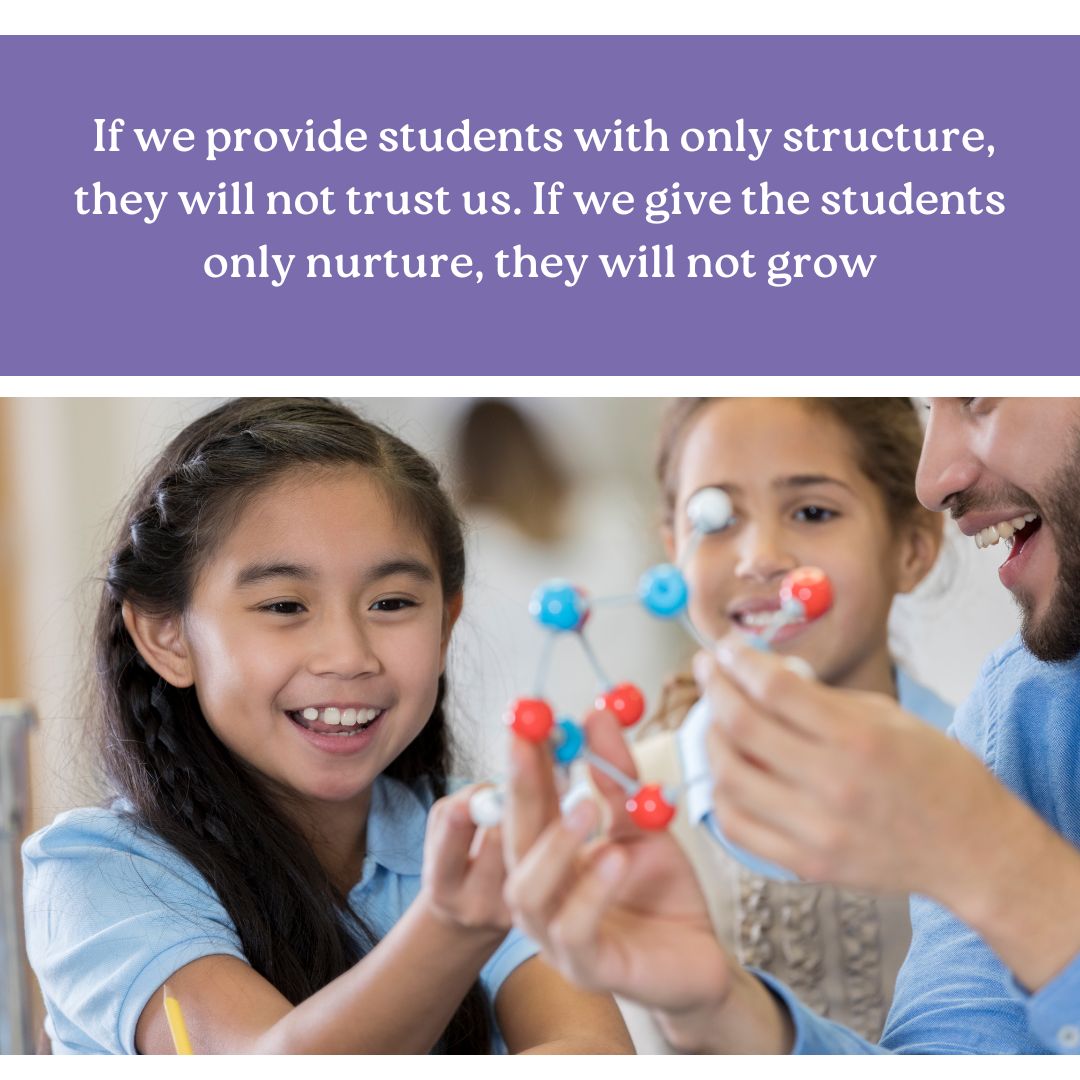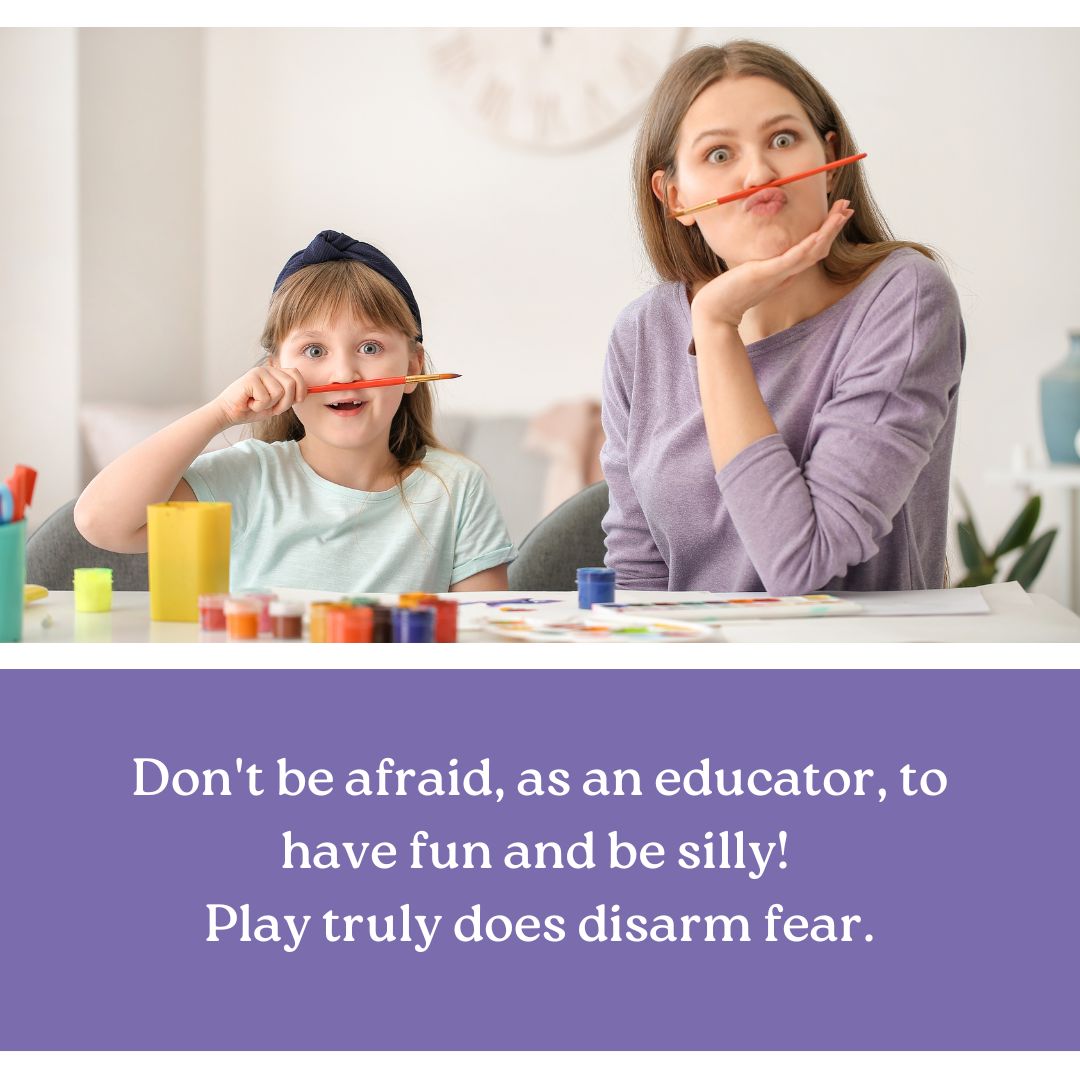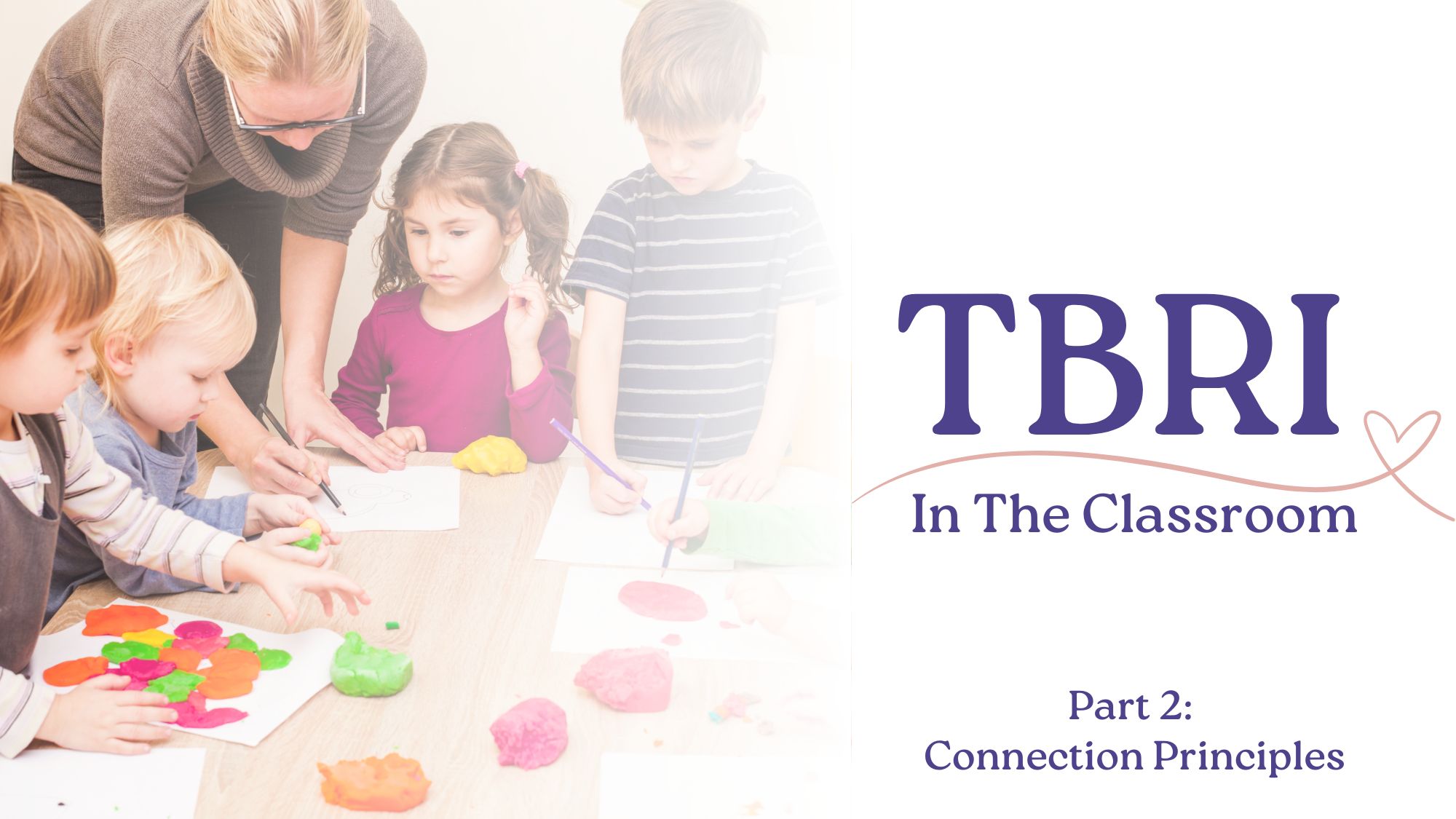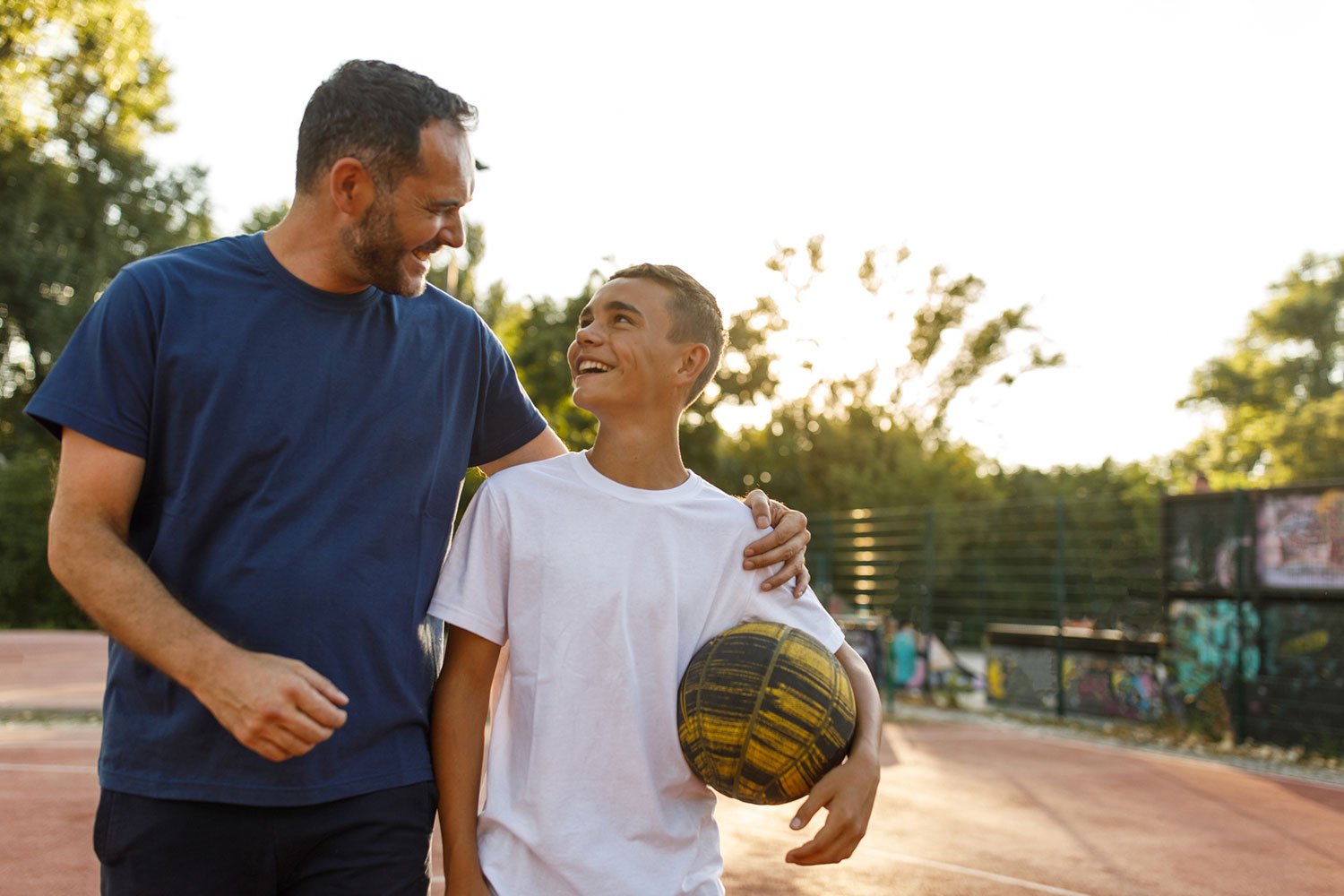In this second part of our TBRI in the Classroom series, we will discover how the TBRI Connecting Principles operate best within our schools and classrooms.
Keep in mind that practicing connecting strategies within the classroom and unpacking our history (our own childhood experiences) can be critical in helping us understand how our ways of doing things butt heads with the history of our students. We will not discuss attachment theory. However, I encourage you to seek attachment information—it will grant you insight into your tendencies and behavior.
Connection in the classroom is imperative to building trust with your students. Most of us naturally tend to be more structured or more nurturing. The proof of this is found in our classrooms every day. Many might ask, what does a student need more of? The answer is simple: both!
Students need 100% of both structure and nurture. If we provide students with only structure, they will not trust us. If we give the students only nurture, they will not grow. I don’t know about you, but I want my students to trust me and to grow! What does this mean for me? If you have a high structure, you must be proactive in nurturing. If you are a high nurturer, you need to provide more structure. Co-workers with strengths in each of these can be your very best teachers.

TBRI Connecting Principles in the Classroom
TBRI’s Engagement Strategies include using connecting tools in our classrooms to promote healthy connections with students of all ages. They include healthy touch, eye contact, voice quality, behavior matching, and playful interaction. Let’s take a look at how these can unfold organically within our classrooms:
Healthy Touch
Healthy touch is super nurturing for those needing some help in this area. A gentle chin prompt is a simple way to gain a child’s attention. A hand on a shoulder says, “I hear you and see you.” Lastly, a symbolic touch can be incorporated, such as a special handshake or high five!
Good Eye Contact
Gaining good eye contact changes brain chemistry! Sometimes, though, it can be challenging to achieve. Saying, “Look at me when I’m talking to you,” is not a connection strategy. Instead, to make it easier, you might say, “I love seeing your eyes,” or “Are those eyes of yours purple?” Kids are quicker to give you good eyes—even if they suspect correction is in their future. We never want kids to feel less precious or valued than they are—no matter the circumstance.
Voice Quality
Using appropriate tone and volume is imperative in creating a connected classroom. Getting loud never means better results—a softer voice captures our students’ listening ears more effectively.
Behavior Matching
We might see that a student needs help and is sitting on the floor, not moving to their desk or table. As teachers, we may sit on that floor right with them—this builds connection and relationship. We might comment that we, too, have hard days and know how they feel now. Behavior matching shows empathy and that we are in this together.
Playful Engagment
Don’t be afraid, as an educator, to have fun and be silly! Play truly does disarm fear. Our kids have forgotten how to play, and so have we. Incorporate as much play and fun as possible in our classrooms—this can be as simple as using a game to review for a test rather than a set of flashcards.
Another critical aspect of using the TRBI connecting principles within our classrooms and schools is sharing power with our students. Empowering them brings about connection and trust! I know, I just lost some of you—hang with me, you’ll see.
Allowing our students to practice making good choices and negotiating how to get their needs met provides them with lifelong skills. I often hear countless stories of kids going off to college and going wild. Is this because they never learned how to make a good choice, or maybe because they were all made for them? Or did they need to learn how to speak up for themselves? Those are both vital skills for kids to have!

TBRI Connecting Principles and Classroom Tools
The tools for our classrooms are offering choices, compromising, and incorporating life value terms.
Choices
Allowing a student choice (not a big ol’ list!) will help you build trust and connection. The choices you come up with are made up of options that both your student and teacher are pleased with! Say your student is in the middle of an exciting science project, and it’s time to move to math—they want to finish and are having difficulty transitioning. You find out they will complete the project in 5 minutes. You could say, “You have two choices: you can slide to math, and when you are finished, you can finish your project, or you can finish your project now, and if you don’t get all your math done, you’ll need to do it as homework.” In this choice, you see that both options achieve completing math. Everyone wins!
Compromises
The student uses compromises when your choices don’t work. They may ask for a compromise to your solution. Asking for a compromise allows kids to understand that their voices matter. The great thing about them asking for a compromise is that they are exercising the upstairs part of their brain that uses reasoning and logic. These are skills we want our students to possess.
The same scenario in our choices example could go like this:
With the two choices you gave me, I don’t like either of those options; how about a compromise?
As a teacher, I may playfully say, “Whatcha got?”
The student might say, ” I can’t afford to get behind in math. Would it be ok if I went to math but brought home my science project to finish?” In this instance, again, both parties are happy! That’s a great compromise.
Life Value Terms
Lastly, we can utilize Life Value Terms to build great connections in our classrooms and schools. These are scripts and short phrases to incorporate during regulated, calm moments throughout the day. We teach these outside the moment; the stakes are low, and the return is very high. Here are a few to implement:
We may say “With Respect” when we remind our students to treat each other respectfully—teacher to student, student to teacher, and student to student.
Gentle and Kind reminds us to use our words and actions wisely. It’s much more effective than “We don’t hit” or ” Would you like someone to call you that name? How would that feel?” Both of those instances can bring shame to a child.
Are you Askin’ or Tellin’? This short script is a playful way to engage a child who appears to be demanding or telling you what will happen. When we playfully engage 90% of the time, we can keep a situation from escalating into something more challenging.
When we say, “Use Your Words,” we can help students slow down, calm down, and articulate their feelings. Again, the script enables us to connect rather than jump into correction, where many find ourselves.
Connection with our students is attainable and very rewarding. Kids want to be seen, heard, and known. Many ask every day, “What do you see in me?” Let it be said that we see a precious child with a bright future.
In the last part of our series, we will discuss the Correcting Principles. You will want to incorporate these practical tools to enhance everyone’s classroom experience.




